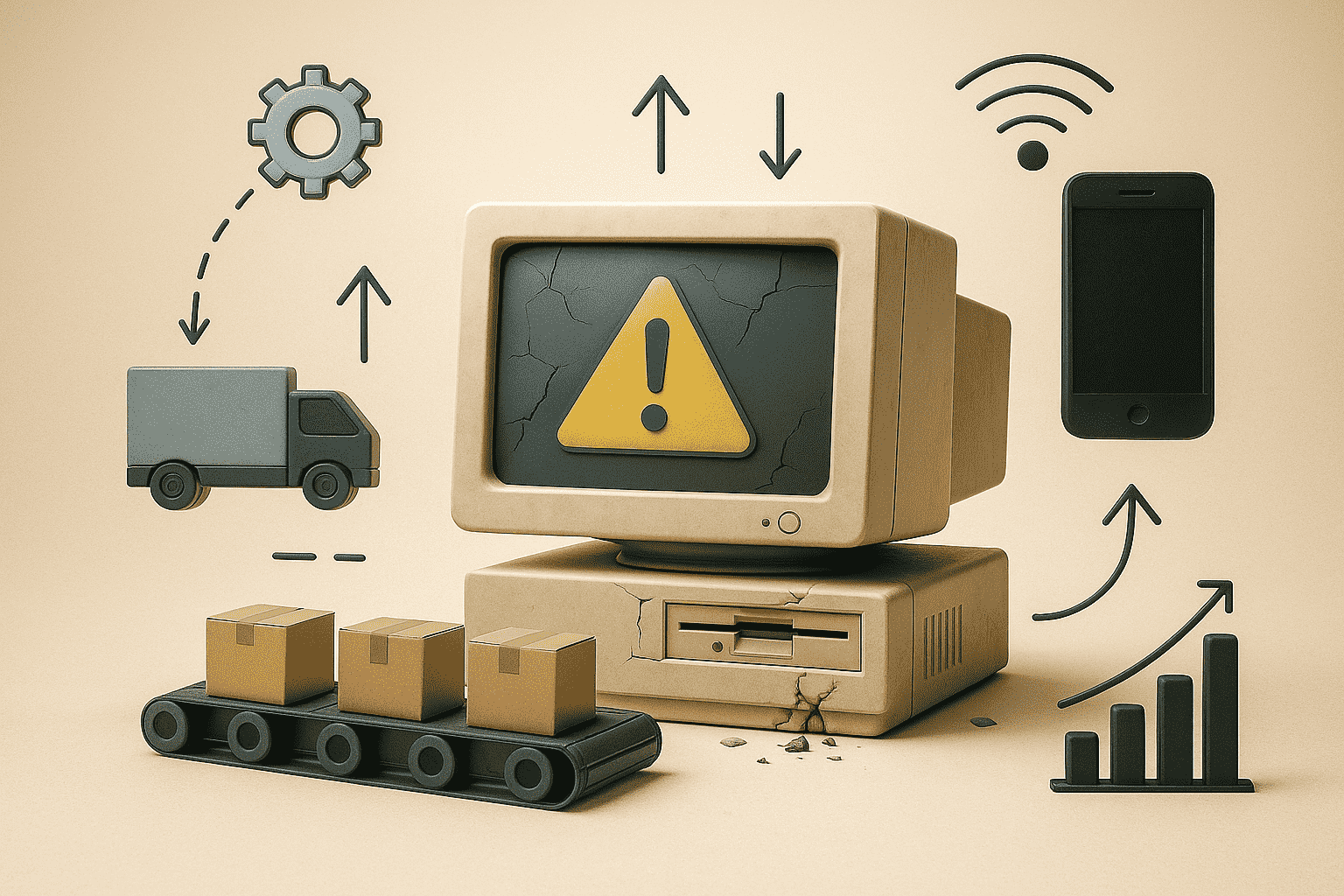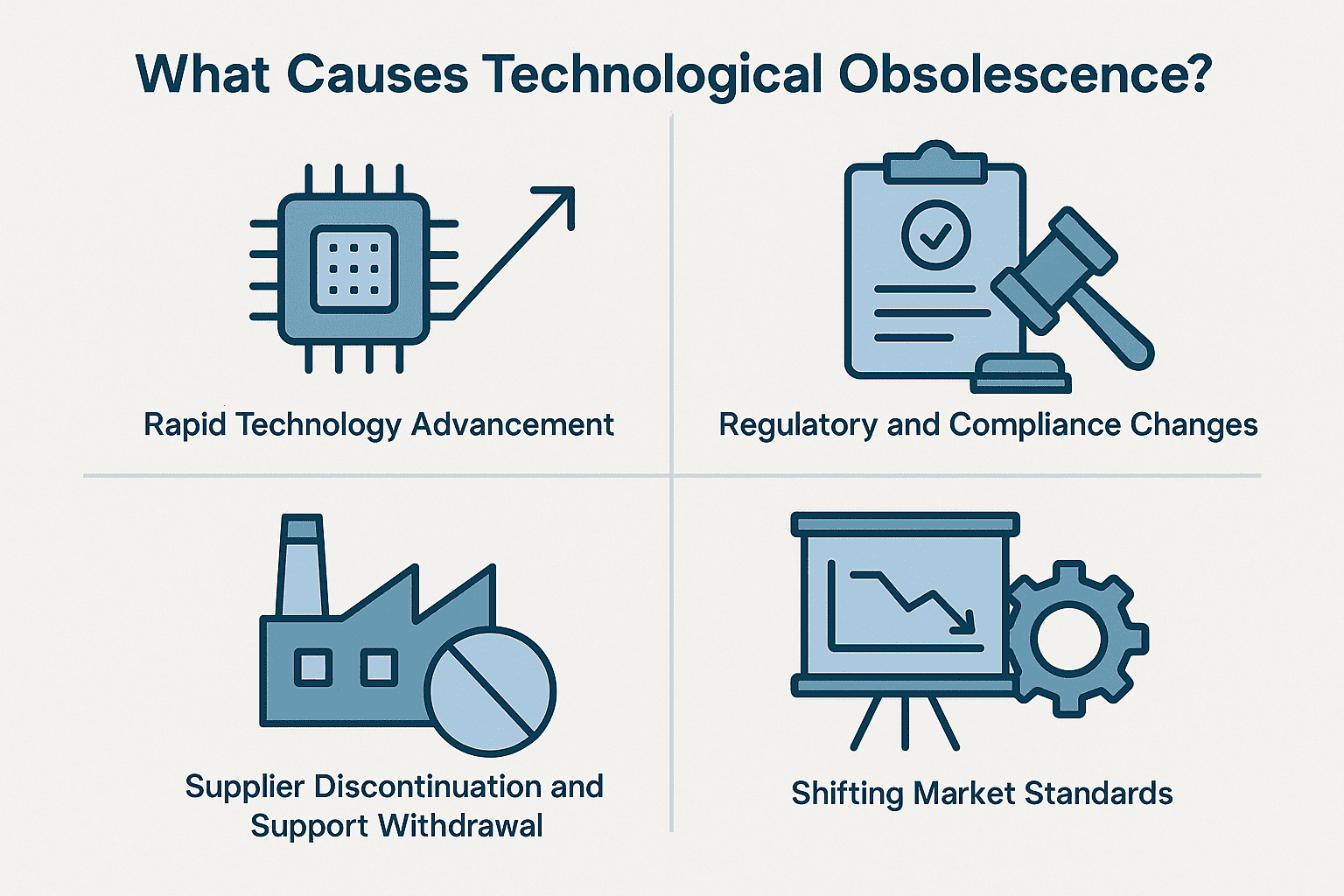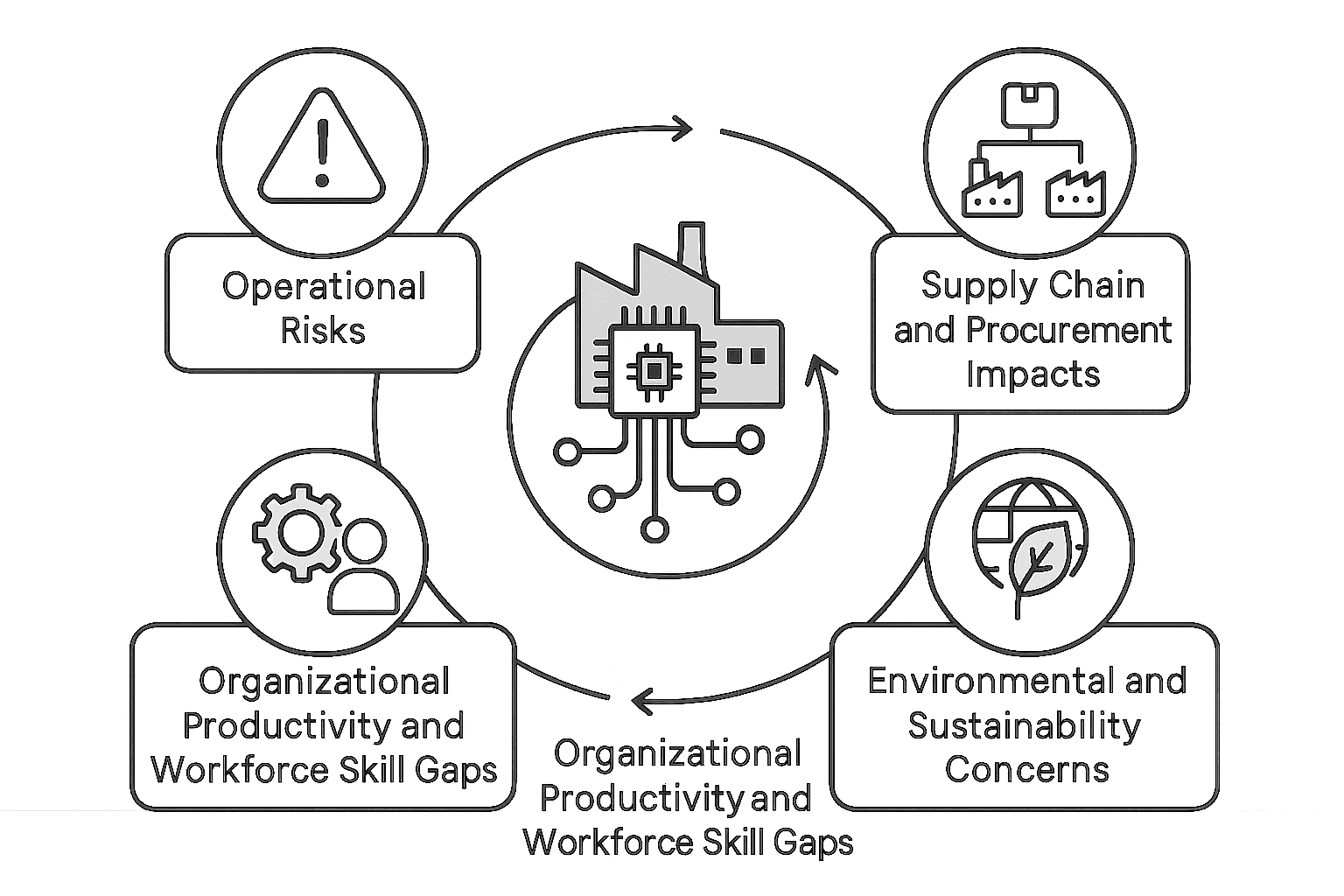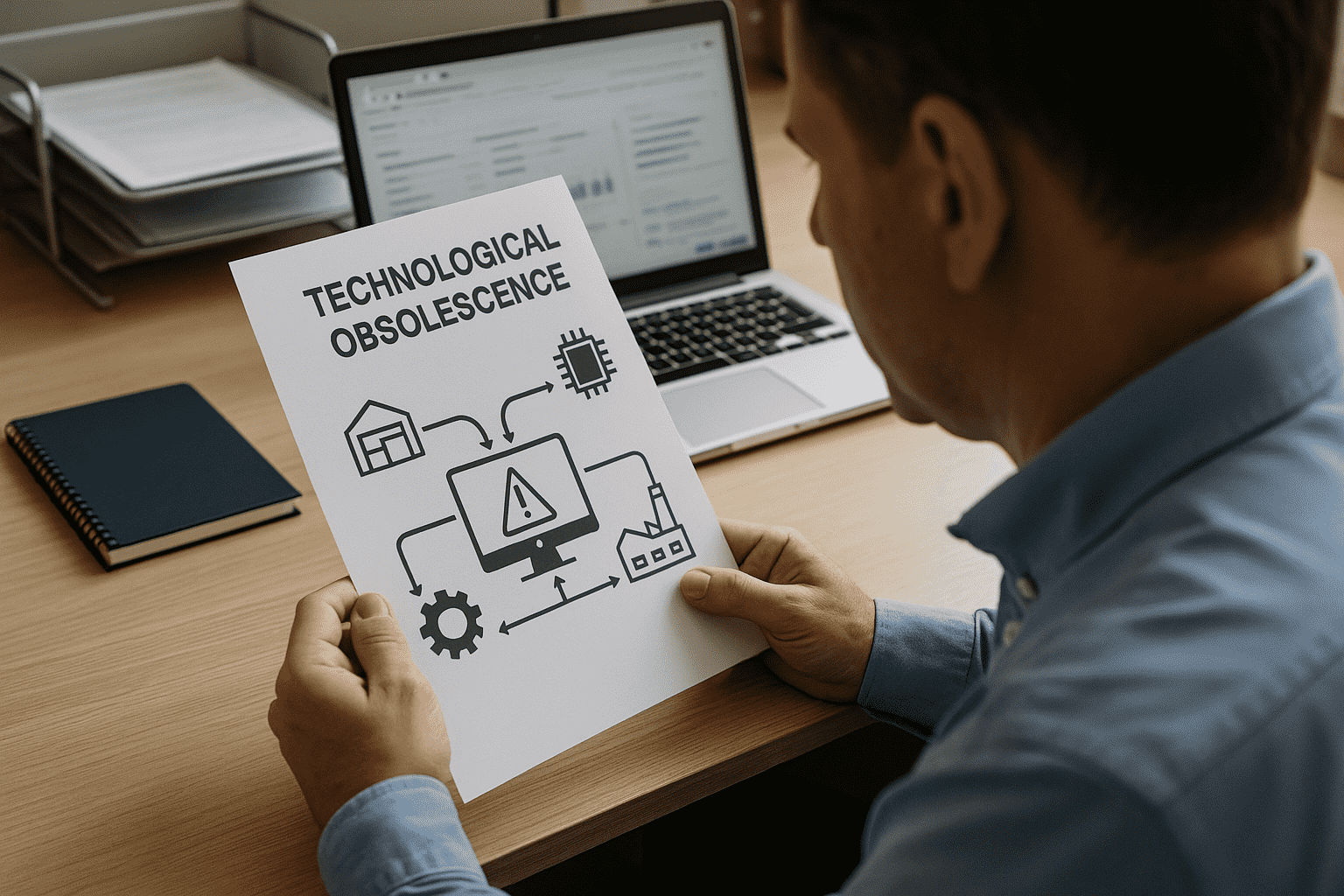Technological Obsolescence: What it is and How to Manage it

Technological obsolescence occurs when equipment or systems lose their practical value due to the emergence of new technology, integration requirements, or industry standards. For industrial organizations, this risk is more than an inconvenience—it can directly affect profitability and growth.
Research from the National Bureau of Economic Research (NBER) indicates that the average firm experiences 4–7% technology obsolescence annually. The consequences are significant: companies with higher obsolescence rates report up to 5.2% slower capital growth and 3.1% slower profit growth over five years compared to industry peers. Persistent obsolescence can also lead to higher operating costs, compliance risks, and lower asset productivity.
This article explains what technological obsolescence is, why it is a critical concern for your business, and the specific strategies you can use to manage and reduce its operational and financial risks.
What Is Technological Obsolescence?

Technological obsolescence occurs when your equipment, software, or systems can no longer meet operational or industry requirements because newer technology or standards have taken their place. This challenge is driven by the rapid pace of innovation, updated compliance requirements, and changing integration needs.
Unlike physical wear or scheduled end-of-life, technological changes often trigger component obsolescence, meaning parts become outdated even if they still work. As a result, components may no longer connect, protect, or perform as required in modern industrial settings, creating risks for system reliability and ongoing operations.
For example, many organizations have had to replace legacy programmable logic controllers (PLCs) after support and security updates were discontinued. Although these PLCs may still operate, they are no longer compatible with current automation systems or cybersecurity protocols. As a result, the asset becomes obsolete—not because of wear or breakdown, but because it cannot meet today’s integration, compliance, or operational demands.
What Causes Technological Obsolescence?

Several factors contribute to technological obsolescence in industrial and asset-intensive environments:
1. Rapid Technology Advancement:
The accelerated pace of innovation in hardware, software, and automation frequently shortens the viable life cycle of existing assets. New solutions often deliver improved functionality, integration, and security, leaving legacy systems behind.
2. Regulatory and Compliance Changes:
Evolving regulations and updated industry standards can render previously compliant equipment or software obsolete. Organizations must meet current requirements to maintain operational continuity and avoid compliance risks.
3. Supplier Discontinuation and Support Withdrawal:
When vendors discontinue products or end support, organizations lose access to critical updates, spare parts, and technical expertise. This increases maintenance costs and heightens the risk of operational disruption.
4. Shifting Market Standards:
Changes in protocols, connectivity expectations, or preferred technologies can prevent legacy systems from integrating with modern platforms. Equipment that does not meet current market standards may no longer support your operational objectives.
How Technological Obsolescence Impacts Your Business

Technological obsolescence introduces a range of risks and operational constraints for industrial organizations. The primary impacts include:
1. Operational Risks
Legacy equipment and unsupported software are highly susceptible to unplanned failures and security vulnerabilities. As technology advances, integration with modern platforms becomes more challenging. Incompatibility may result in isolated data, workflow disruptions, and a lack of real-time visibility across your operation. These risks can lead to unexpected downtime, lost productivity, and higher incident response costs.
2. Financial Risks
Maintaining obsolete assets often requires increased spending on emergency repairs, specialized labor, and out-of-warranty service. Capital remains tied up in non-productive equipment, reducing your ability to invest in more efficient or innovative solutions. Furthermore, as market demand for legacy systems declines, resale opportunities diminish, leading to stranded asset costs and a lower overall return on investment.
3. Supply Chain and Procurement Impacts
Sourcing replacement parts or technical expertise for discontinued systems often leads to extended lead times, elevated costs, and potential supply chain interruptions. Reliance on obsolete technology reduces procurement efficiency by limiting vendor options, increasing complexity in sourcing, and restricting your ability to negotiate favorable terms.
4. Environmental and Sustainability Concerns
Retiring obsolete equipment creates additional electronic waste and complicates compliance with evolving environmental regulations. Continuing to operate outdated, inefficient systems often increases energy consumption and carbon emissions. This makes it harder to meet corporate sustainability goals and stakeholder expectations regarding responsible resource management.
5. Organizational Productivity and Workforce Skills Gaps
Obsolete systems can create skill gaps as fewer employees have experience with legacy platforms. This can hinder the adoption of new technologies, create training bottlenecks, and slow down digital transformation initiatives. The resulting productivity losses and increased training demands can further challenge your organization’s ability to respond to market changes.
How to Manage and Mitigate Technological Obsolescence

Reducing the impact of technological obsolescence requires a structured, proactive approach. Consider these key strategies:
1. Conduct Regular Technology Audits
A proactive audit process is the cornerstone of effective obsolescence management. By systematically inventorying all equipment, software, and systems, you gain early visibility into assets approaching end of support or compatibility.
Utilizing a computerized maintenance management system (CMMS) or enterprise asset management software, you can automate tracking of asset age, vendor status, and operational risk. This allows your team to identify critical gaps, plan interventions, and avoid unanticipated disruptions when legacy technology is no longer supported.
2. Develop a Proactive Replacement and Upgrade Strategy
Integrating lifecycle planning and risk assessment into your capital management strategy enables you to address obsolescence before it becomes a liability. Develop a clear roadmap that outlines when key assets should be upgraded or replaced, based on business impact, regulatory requirements, and performance trends.
Prioritize investments in systems that are essential to safety, compliance, or core operations. By forecasting upgrade needs and budgeting accordingly, you reduce emergency spending and ensure seamless transitions.
3. Utilize Modular and Scalable Solutions
Selecting platforms and equipment built on open standards and modular architecture positions your organization to respond quickly to future change.
Modular solutions enable you to upgrade or replace individual components as technology evolves, rather than overhauling entire systems.
This flexibility supports long-term integration, reduces vendor lock-in, and lowers the total cost of ownership over the asset lifecycle. Standardization across sites and departments further simplifies ongoing maintenance and reduces obsolescence risk.
4. Maintain Strong Vendor Relationships
Strong supplier relationships are essential for anticipating and mitigating technological obsolescence. Regular communication with vendors provides early access to product roadmaps, end-of-life notifications (EoL), and upcoming support changes.
Engaging suppliers early allows you to secure extended support contracts, negotiate transition timelines, and plan orderly migrations to next-generation solutions. This approach minimizes the risk of sudden disruptions and enhances your ability to make data-driven investment decisions.
5. Invest in Employee Training and Change Management
As technology evolves, your workforce must be equipped to adapt. Establish ongoing training programs to upskill teams on new systems, tools, or processes. Clear communication during upgrade projects is critical to ensure buy-in and minimize resistance.
Structured change management initiatives help bridge the gap between legacy operations and modern technologies, enabling smooth adoption and sustained productivity during transition periods.
6. Consider Possible Alternatives for Asset Utilization
When technology no longer aligns with your business needs, timely asset disposition is essential.
Evaluate options for liquidation, redeploying, or repurposing equipment that has reached the end of its technological life.
Working with industrial liquidation experts, such as Amplio, provides access to qualified buyers and market analytics that maximize asset recovery.
How Amplio Helps You Manage Technological Obsolescence

Technological obsolescence requires a disciplined approach to asset disposition and recovery. Amplio provides enterprise clients with a comprehensive solution for surplus and obsolete equipment:
- Data-Driven Asset Valuation
Amplio online platform leverages market analytics and AI-driven insights to deliver precise valuations for surplus machinery and industrial assets, supporting informed decisions and maximizing recovery value.
- End-to-End Disposition Management
The Amplio team manages every aspect of the disposition process—including inspection, compliance, marketing, negotiation, and settlement. This approach minimizes operational burden and ensures transparency at every stage.
- Direct Access to Qualified Buyers
Amplio connects your surplus equipment to a curated network of vetted industrial buyers, expediting transactions and improving capital recovery timelines.
Contact us now to begin your asset assessment and turn obsolete equipment into growth capital.